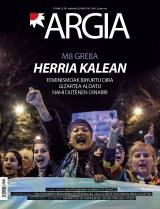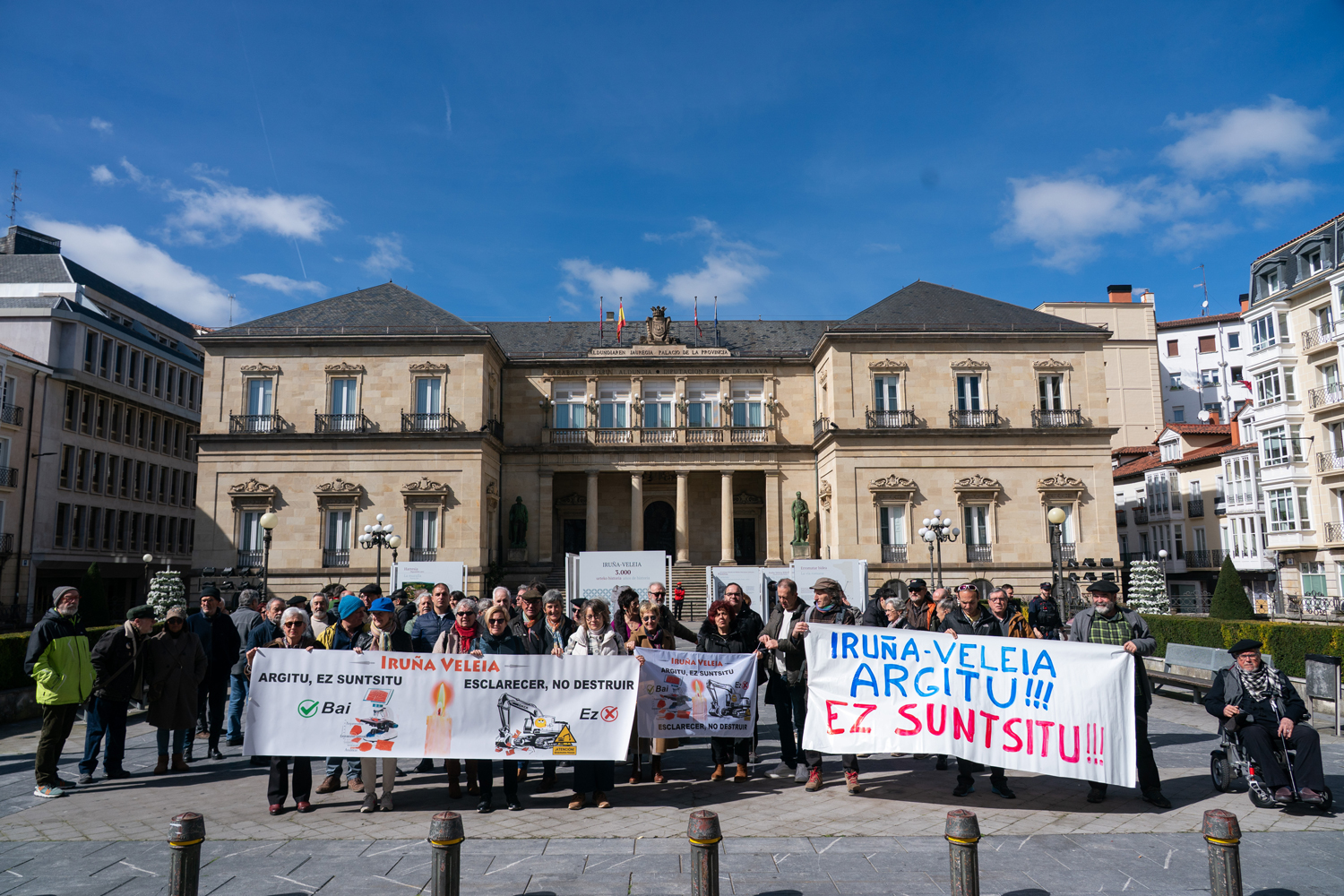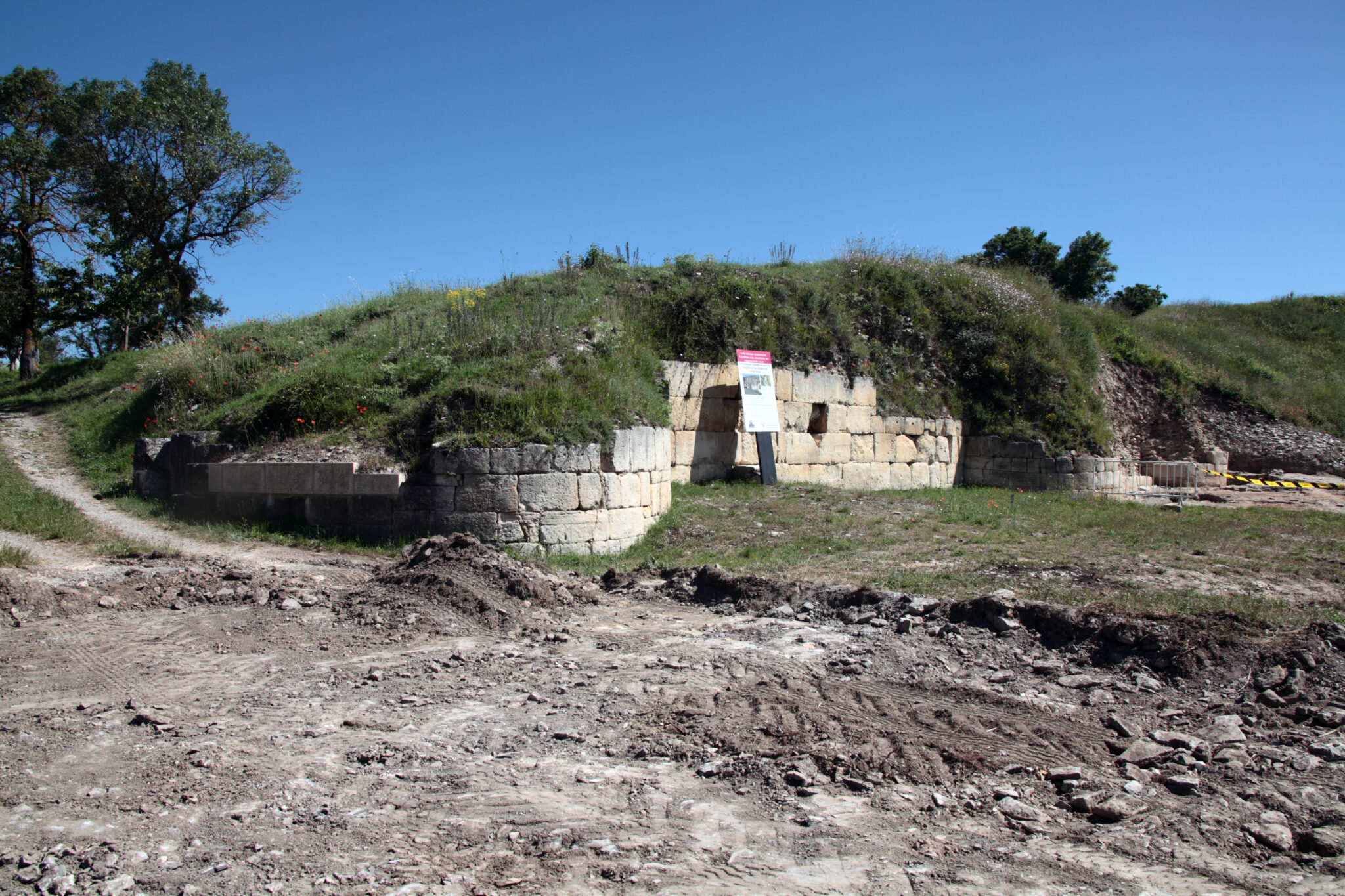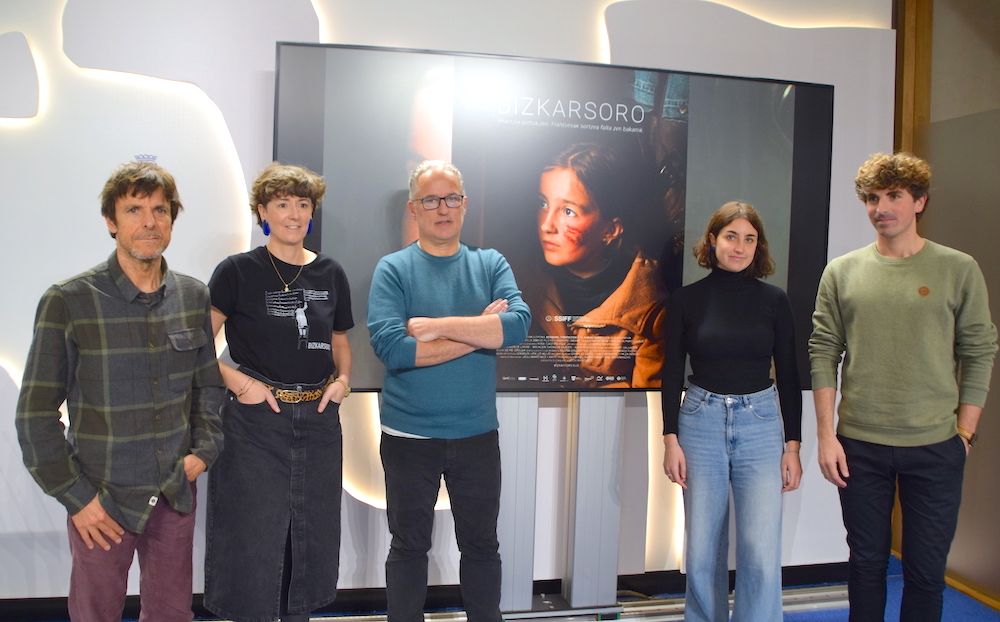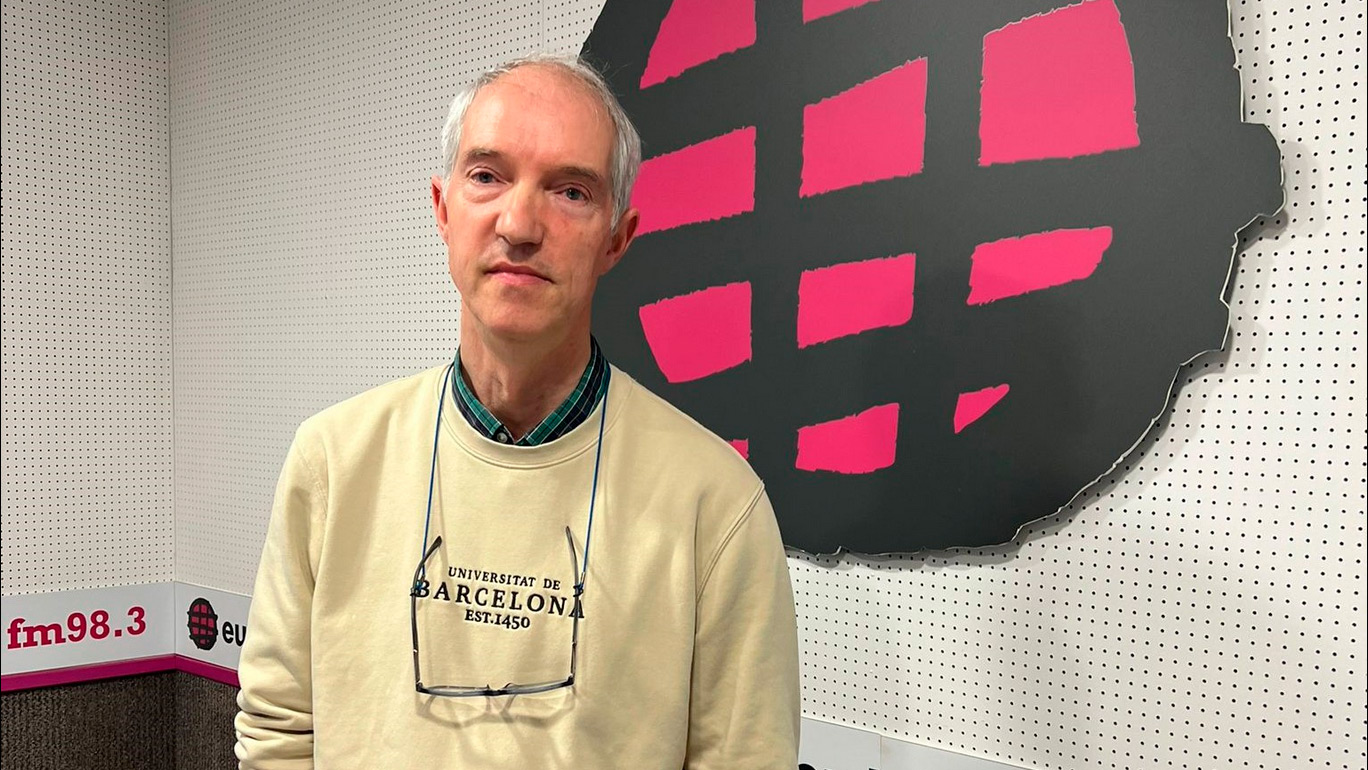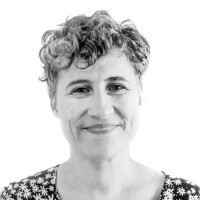"The data shows us that the people of Sardinia are a vestige of the Basque Country"
- Euskera and Paleosardinium, a language spoken in Sardinia before the Romans conquered the island, were joined by writer and linguist Juan Martín Elexpuru (Ubera, Bergara, 1950). (Pamiela, 2017). First, a surprising hypothesis, not a new one.

You know that the Basque language and the old language of Sardinia are united.
Of course. However, it is necessary to provide the first data to confirm that there are Basque remains in the area. To this end, I've tried this in this book. I am not the first to try, nor the first to propose it, but I am the one that has given the most data, in toponymy and other times. Having done the research work, with the data on the table, I had to make hypotheses, and there I joined. Among the hypotheses – and not just my own – the main hypothesis is that, after the last glaciation, when the ice was removed, people dispersed from here, from this geographical area known as “Basque refuge” or “Franco-Cantabrian”. Among other things, Sardinia.
When?
In the Mesolithic, surely. Seven or eight or ten thousand years ago, because people had not moved once. In the meantime, I'm sure he moved. Archaeologists and geneticists support this hypothesis. Another hypothesis is that Euskera came from Anatolia. The arrival would take place in the Neolithic era. This is not, therefore, what the first hypothesis indicates, but it is the reverse path: those people would pass through Sardinia before reaching the Basque Country. But this second hypothesis has less force, although it has its weight. There is also a hypothesis that Euskera and Paleoardini will have a Paleolithic, Refuge and Neolithic, Eastern contribution. That is, the merger of both.
As we can read in the book, 100 years ago linguists also addressed this issue. Vittorio Bertoldi, among others.
At that time, the theory of the Mediterranean substrate was fashionable. In short, according to this theory, all the languages spoken today in the Mediterranean area have come from outside and not long ago: that is, the Greek and the Italian languages, including Latin, came a thousand or two thousand years before Christ was born, together with the Indo-European expansion towards the Mediterranean. These Indo-European peoples undoubtedly adopted a series of concepts that used the cultures and languages found in them, both abstract concepts and the names of places, animals, plants and others, always under the theory of the Mediterranean substrate. Some say, especially from the Italian school, that 40% of the linguistic elements that appear in both Greek and Latin belong to this substrate. Bertoldi is of that view, along with many others.
What, then, is Eduardo Blasco Ferrer’s contribution to our linguist of the day?
At the time of the bertoldis and the others, the proof of the relationship between the Basque Country and the paleosardinium was but a dozen words: gorosti / golostri; mukuru / mogoro; ospel / ospile… and some toponyms. Blasco Ferrer, on the other hand, went much further. Without taking into account the theory of the Mediterranean substrate, it gives importance to the brotherhood between the Basque and the Paleosardinian. According to Blasco Ferrer, Euskera and Paleosardinium were originally the same language and, subsequently, each took their way.
In 2010 he began his journey in Sardinia for the first time.
On the occasion of Iruña Veleia, Valencian linguist Luis Silgo spoke to me about the work of Blasco Ferrer. I had to be about to publish the book. I contacted Blasco. So I wondered, as I do in the name of the book. Traces of the Basque Country in Sardinia?, with question mark. And that is that, in the cases of old times, certainties are scarce. In asking the question, I have tried to answer it and come to the conclusions. And, in my opinion, the data shows us that there are traces of the Basque country in Sardinia. If someone else says something else or has enough arguments to oppose it, let them say so.
You have prepared a map of Sardinia with toponyms with the Euskera footprint. They're more than many.
Yes, there are many. In Sicily, I have tried to do the same, and there is almost nothing of that. I found only three or four coincidences. In Sardinia, on the contrary, there are many who have some Basque roots, I have listed more than 4,000. On the other hand, it is surprising that among them there are names such as Aspizku, Urrosolo, Meskiriz or Izturiz. The place where they appear is also significant. In Sardinia, the names "Basques" appear to a greater extent to the east of the island, that is, in a very chaotic area of orography, to which the conquerors have barely mastered and to which they have given the name Barbaria. And that's where the Basque country has the most names. In the language itself there are also very special characteristics, such as the lack of use of r at the beginning of the word, the absence of v...
Despite the great evidence, you complain that the scientific community of Euskal Herria does not pay attention to the issue.
First of all, they take it for granted that the Basque Country has not been found to be familiar, either among the dead languages or among the living languages. And they think that if so far the members of our scientific community have not found it, no one else will find it. It says: “If evidence is found, we will accept it.” But then it doesn't. There is a second reason. Given that we have little documentation of antiquity – almost nothing more than the Basque names that appear on the tombstones and altars of the Roman era – reconstruction is almost the only method of regression. Taking into account the evidence of Sardinia – or Iruña – Veleia, reconstruction would lose weight, at least in part.
In part, though.
Yes, but some do not like to admit that it may be wrong in nada.Una third reason: some etymologies that are taken for safe, like the one that comes from the Latin pit in Euskera, would be denied if in Sardinia that word or that root appears in the beginning, in the middle, in the end… Blasco Ferrer emphasizes this in his (ERRO1) truth it was not necessary to go there. Or you can take Soro's example: [Basque Dictionary] According to the orotarico, it comes from the Latin solum. This word would have given soil in Euskera, yes, soil, whatever we walked, but no field or sounded, “farmland.” In the Romanesque languages solum does not mean “field of cultivation” anywhere. In Sardinia there are many fields and alone. Barbarian is a town of the Roman era of Sorabile, the present town of Orgósolo. It is clear to me that some data from Sardinia call into question certain etymologies and theories that Mitxelena and her followers have taken for granted. Or the article - at the end of the word, let us call it determinant - which is said of the Middle Ages, if it is a hypothesis it has become almost a dogma in our faculties. In Sardinia there are toponyms such as Arana, Arria, Barria, Basaura, Ilarra, Iria, Lasa, Maia, Sarria... which, in my opinion, distorts the theory. It seems to me that Basque philanthropists should be happy with the new discoveries; I hope that the data before us will make those moving in this world reflect, if not the new generations.
New ones may not be old generations.
If the “scientific community” responds to the “yes”, give arguments, even if they are contradictory. If we think, it can be discussed, but the tactic is to ignore, to ignore, not to say anything. It has been eight months since the book was published, and neither a criticism nor a comment has yet been published. Since we did the presentation, this is the first interview I write in the ARGIA press, although I've tried with a lot of media. It seems that “the Basque cultural elite” accepts no more than what the University of the Basque Country or Euskaltzaindia say.
Otsailean bost urte bete dira Iruña-Veleiako epaiketatik, baina oraindik hainbat pasarte ezezagunak dira.
11 urteko gurutze-bidea. Arabako Foru Aldundiak (AFA) kereila jarri zuenetik epaiketa burutzera 11 urte luze pasa ziren. Luzatzen den justizia ez dela justizia, dio... [+]
Martxoaren 30erako Iruña-Veleia martxan, SOS Iruña-Veleia eta Euskeraren jatorria elkarteek manifestaziora deitu dute, Aski da! Argitu, ez suntsitu lelopean. Azken bi urteetan "hondeatzaileak sistematikoki eremu arkeologiko oso aberatsak suntsitzeko modu... [+]
Urriaren 26an Iruña-Veleia Argitu, ez suntsitu jardunaldian Zenbat esku daude Iruña-Veleian aurkitutako ostraken testuetan? ponentzia aurkeztu zuen Joseba Lizeagak
“It’s been 18 years since some 400 graffiti appeared on the excavation, 16 years since he was expelled from the excavation camp of Lurmen without scientific evidence and 4 years since the trial was held without clarifying the subject, we can say that we continue to... [+]
Today, all the hierarchies that have been built in our world are the result of a process of global colonization. These global hierarchies of domination are formed by other more specific intertwined hierarchies, that is, classical, ethnic, aesthetic and even linguistic. What we... [+]
In June 18 years ago we started to get to know the paintings of Iruña Veleia. Good news for the Basques.
But the current situation is not so satisfactory. On the one hand, the Provincial Council of Álava (DFA) says that all graphites are false, and that those who think... [+]









